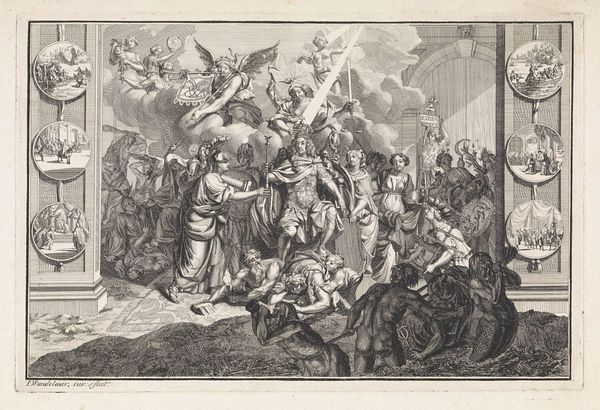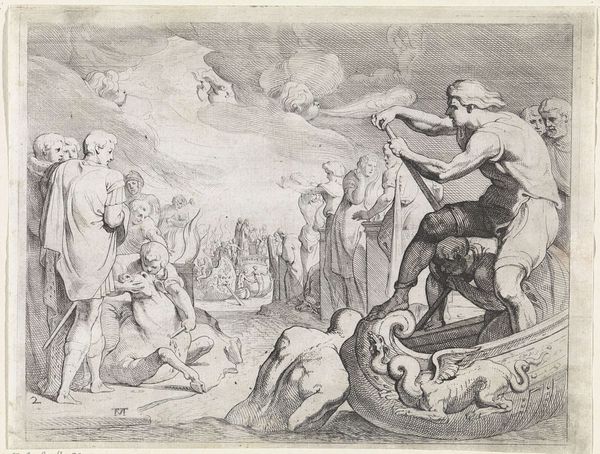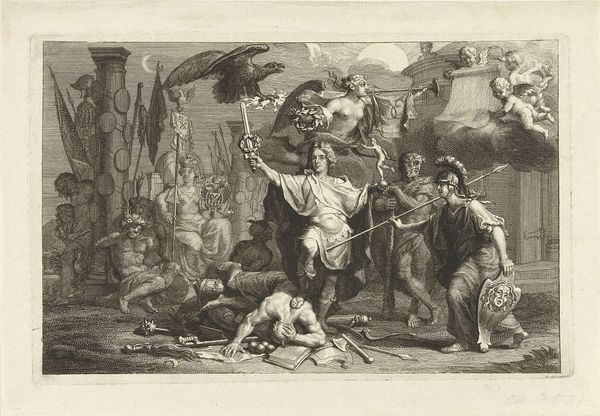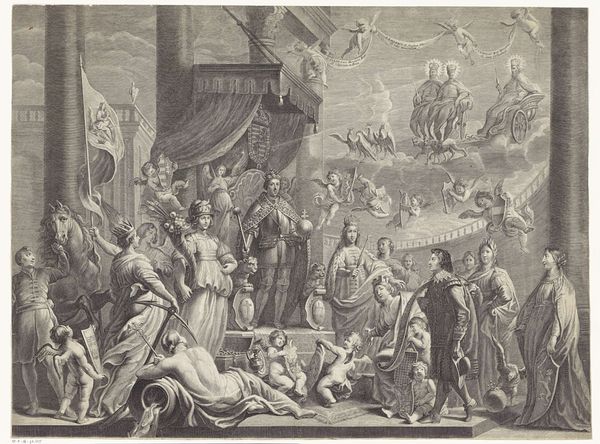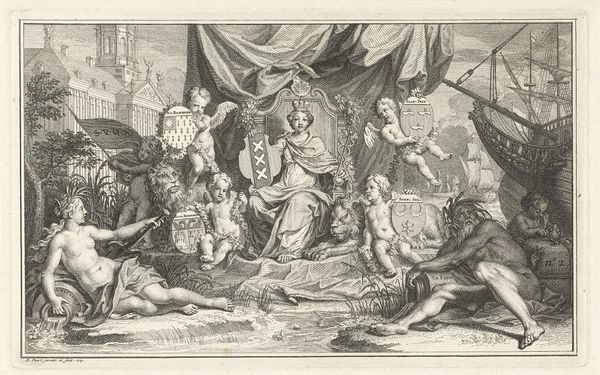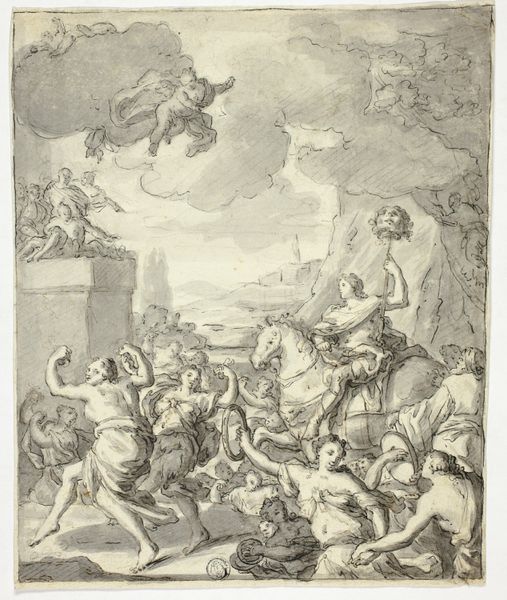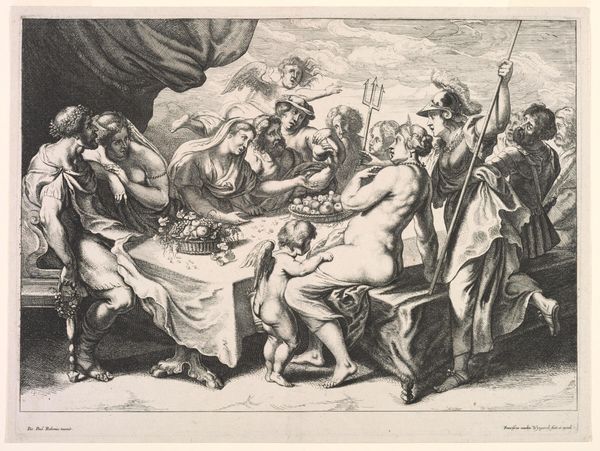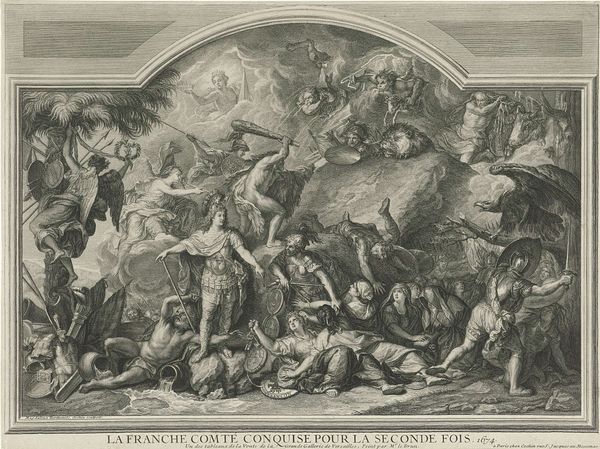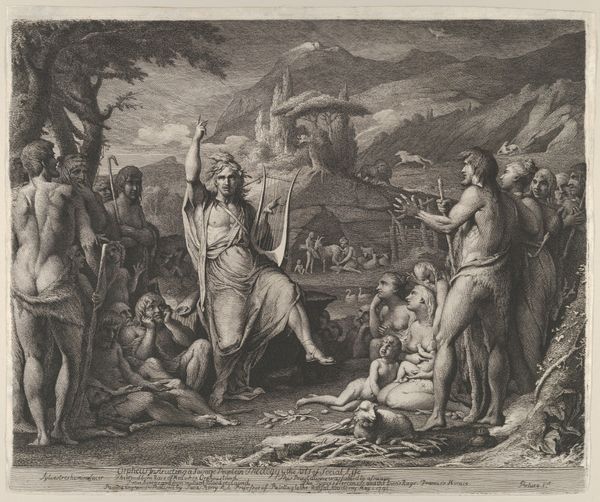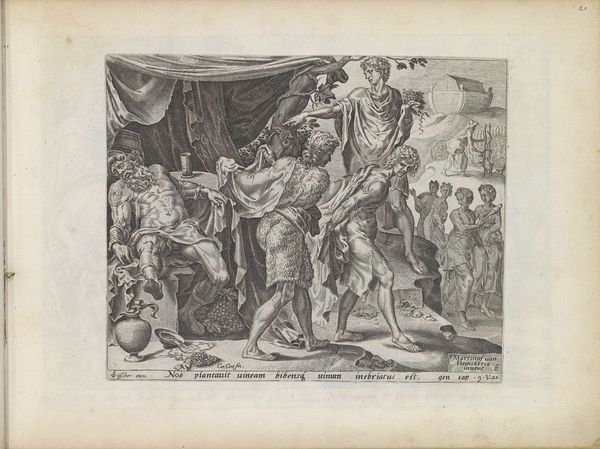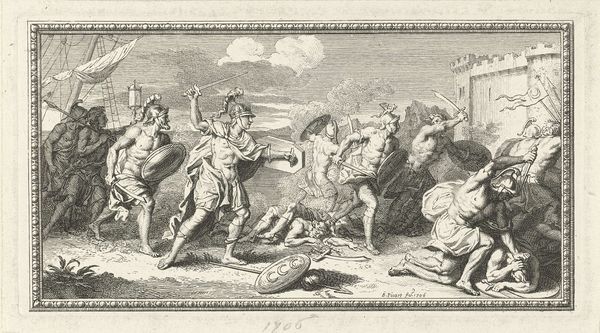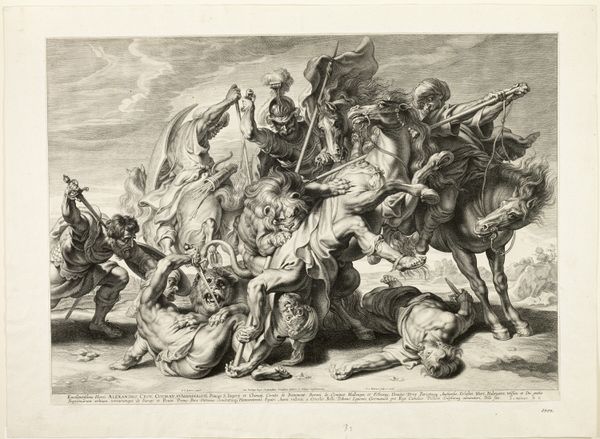
Allegorie op de overwinningen van prins Eugenius van Savoye, 1719 1719
0:00
0:00
janwandelaar
Rijksmuseum
drawing, ink, pen
#
drawing
#
allegory
#
baroque
#
landscape
#
figuration
#
ink
#
pen
#
history-painting
Dimensions: height 153 mm, width 236 mm
Copyright: Rijks Museum: Open Domain
Curator: This drawing by Jan Wandelaar from 1719 is titled "Allegory on the victories of Prince Eugene of Savoy". Editor: My first impression is that it's a rather grandiose, visually dense composition. So much going on; allegorical figures, symbols of victory... Curator: Exactly! Wandelaar created this pen and ink drawing as a celebration of Prince Eugene's military achievements, aiming to situate him within a long lineage of triumphant leaders. Editor: Look at the dynamism of the composition—the strategic placement of figures, and the interplay of light and shadow that adds a real sense of theatricality. Curator: It's not just theatre; it's about solidifying power. Consider the socio-political implications; imagery was the primary form of media for broadcasting triumphs and cementing authority. It visually narrativizes history! The artist, like a PR person today, curates and carefully selects who would remember these achievements, ensuring they do so favorably. Editor: Absolutely, and one might say he orchestrated all of these symbolic gestures that elevate the scene, reinforcing its propagandistic intentions through pictorial devices. Notice how his use of negative space creates visual pauses which let certain characters come forward as central figures of the composition, even. Curator: This commission reflects the patronage system of the time. Artists needed to court favor with powerful figures like Prince Eugene, leading to propagandistic depictions. There's that link between artistic output and the agendas of those in power. It really drives home how artists navigated social structures of the era to survive and indeed flourish, creating what can become powerful legacies for figures such as the Prince. Editor: I see it too, but the effectiveness of the linework, and the considered distribution of tone—it's visually compelling, isn't it? Aesthetically striking beyond its explicit message. Curator: Yes, propaganda can be beautiful. Jan Wandelaar was making a statement to his contemporaries and to the future, and perhaps to himself. The narrative weaves victories and glory, while, for us, it also speaks to its creation in the period where royalty was both celebrated and criticised in public. A visual narrative reflecting social, economic and political ideas. Editor: Agreed! Examining its composition really helps illuminate how images create powerful, lasting narratives, regardless of the story.
Comments
No comments
Be the first to comment and join the conversation on the ultimate creative platform.
